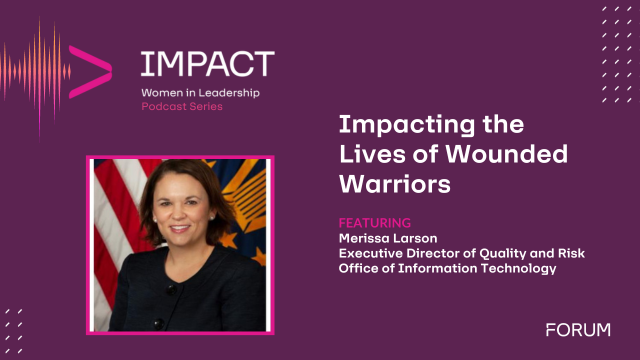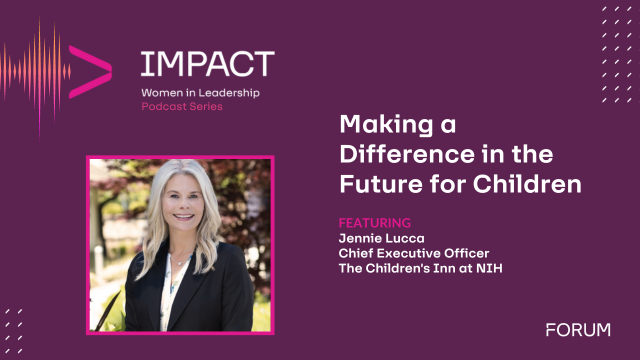by David Dastvar and Linda Hermer, Ph.D
Gaps in U.S. public health data systems contributed to health and economic losses during the COVID-19 pandemic. This article by Eagle Technologies examines how two new technologies could improve public health data. It also provides recommendations for Government to prepare to handle the next pandemic, bioterror strike, or uncontrolled drug-resistant pathogen including the development of Public-Private Partnerships, and advice to industry.
Cloud-Based Technology for Better Public Health Data
A Centralized, Cloud-based System for Reporting Infectious and Chronic Diseases and Vaccinations
The U.S. must implement centralized reporting of all infectious and chronic diseases and vaccinations to a flexible, cloud-based system within 24 hours of test results. Currently, testing entities such as Quest, as well as doctors’ offices and hospitals, are required to report data on 121 “reportable” conditions such as COVID-19 and influenza separately to the nation’s 2,300 state and local public health agencies within 24 hours of a positive diagnosis. These myriad, disparate reporting locations engender a tremendous reporting burden and interfere with aggregating, analyzing and sharing the data. Additionally, most of the data in the non-federal health agencies is stored on-premises in legacy systems. This is inconsistent with the Modernizing Government Technology Act of 2017 and the Federal CloudSmart strategy.
A single, unified, cloud-based system would align with these Federal initiatives to streamline, optimize and safeguard Government public health technology and data. Data collection would feature multiple concurrent reporting streams and real-time streams processing, with reporting entities using custom application programming interfaces (APIs) and existing systems for electronic case reporting (eCR). This cloud deployment should scale based on real time load, and provide elastic, on-demand, scalable architecture and capacity. These features would be necessary to support reporting every day on tens of thousands of COVID-19 cases and other diseases, by thousands of testing entities and providers to the CDC and the 2,300 public health agencies.
One or more Federal contractors would be needed to maintain such a system for the CDC. That is because the CDC is barred from possessing clinical case information with patients’ personally identifiable information. The contractor(s) would be responsible for ensuring the CDC received de-identified information while state and local public health agencies would receive data with patient identifiers.
National Longitudinal Database
An important outgrowth of this centralized reporting would be to establish a national, longitudinal database of all residents’ COVID-19 medical histories, a “COVID Repository.” The database would serve as a master registry of whether individuals were functionally immune to COVID-19 through an established prior infection, vaccination, or positive antibody test. Where possible, this record should contain the strain of each infection, obtained with genetic sequencing, and the vaccination received, along with its effectiveness vis-à-vis the COVID variants. Data analytics should be employed to provide real-time dashboarding on cases, deaths, the proportion of the population with functional immunity, reinfection rates, and many other measures of interest, at any geographical and temporal scale.
Information from the system would be shared with the Federal Aviation Administration (FAA), the Federal Emergency Management Agency (FEMA), the Department of Defense, intelligence agencies, and other Government, industry, and research community stakeholders.
De-Identified Health Information
The CDC has expressed interest in including other de-identified information in such a centralized, cloud-based system, such as de-identified electronic health record (EHR) data and hospital admission, discharge, and transfer (ADT) records. A longitudinal data set could be created from these data that would be continually updated in near real-time as data on cases of infectious diseases, immunizations, and chronic conditions, as well as health care utilization, flowed in via the APIs and eCR. This database would be an invaluable resource for the CDC, other Government agencies such as the Health Resources and Services Administration (HRSA), researchers, and other stakeholders wanting to engage in disease modeling, epidemiological studies, and resource allocation. Moreover, when fully populated with EHR and other health data, this database could take the place of Federal health surveys, which have been suffering from increasingly low response rates, as it would provide richer and more accurate data for tracking population health and Healthcare trends.
Government Should Lead Development of Public-Private Partnerships
The Federal Government should lead the development of public–private partnerships to solve “impossible” challenges. Public-private partnerships rapidly solved several urgent yet intractable problems during the pandemic. Perhaps the most remarkable example of a public-private partnership success with COVID-19 thus far was the development of several highly effective COVID vaccines—some relying on the new and better mRNA approach—in less than a year, when vaccines were expected to take 10 years to be produced.
In the wake of COVID-19, people’s relationship with technology is expected to deepen, with a host of related challenges. Better artificial intelligence and wider deployment of it are needed, for instance, to curtail the spread of misinformation about the virus and vaccines. Another example concerns tracking infected individuals and alerting others while preserving privacy rights. With the Federal Government’s knowledge of Federal contractors, other health IT firms, and academic researchers, it is well-positioned to form successful new partnerships.
Focus on Long-Term Solutions
The U.S. should be proactive, not reactive, focusing on investment in long-term solutions rather than reacting to a predictable crisis. In the past year, the U.S. spent at least $5.7 trillion on the pandemic. Strategic investment could be more cost-effective.1 U.S. resource allocation for pandemic preparedness and biodefense has been as little as $6 billion annually in some recent years and needs to be greater. Part of a forward-looking investment strategy could be to create a pandemic preparedness agency akin to the Defense Advanced Research Projects Agency (DARPA).2 This agency would study and recommend solutions to looming zoonotic and bioterror threats so that expert guidance is ready to go when the time comes. Additionally, the investment should broaden the rapid release of high-quality, open, de-identified, Geographic Information System- (GIS-) linked public health data that can be used for public planning and research.
Safeguarding Data
The previously mentioned solutions would serve as unparalleled resources for research and be more efficient than current legacy systems. As recently as 2017, many Government agencies were spending over 75 percent of their budgets maintaining legacy systems that were becoming siloed as they failed to integrate with newer technologies. In an era when the nation’s COVID-19 and other health data are among the top targets of international cybertheft efforts, the cloud-based systems’ increased security would also safeguard U.S. residents’ personal health information.
Advice for Industry
In the wake of COVID-19, the Federal Government is interested in reshaping its public health data collection. However, Federal contractors should be careful in proposals not to ask the CDC or any other agency to violate their standards for data collection and sharing. For example, the CDC abides by a principle of collecting the most minimal data to serve a given public health function. This includes not collecting personally identifiable information (PII) if it is possible to avoid doing so and still accomplish the mission. However, several exceptions to HIPAA laws allow “privileged entities,” including many industry partners, to acquire and handle this information under certain circumstances. They may be well-placed to perform some population health monitoring functions that the CDC cannot. Additionally, in many cases they can perform research or carry out other business goals with data that includes PII.
Federal contractors should also be cognizant of the fact that the Federal Government wants to avoid anything like a Federal mandate to show proof of COVID-19 vaccination for participation in public activities. Thus, although the COVID Repository option would be an excellent source of data for a COVID-19 vaccine passport, it should not be used for that purpose. Contractors proposing similar systems should be aware of this Federal Government sensitivity.
Click the diagram to access a full size version.
About David Dastvar
 David Dastvar serves as Chief Growth Officer with Eagle Technologies, Inc. In his 29 years with public sector and Fortune 1000 companies (including CSC/GDIT, Infosys, CDI, and Northrop Grumman), he has developed and managed professional services and solutions for enterprise- level projects requiring a high degree of program management and technical expertise. He can be contacted at david.dastvar@eagletechva.com or (202) 497-8848.
David Dastvar serves as Chief Growth Officer with Eagle Technologies, Inc. In his 29 years with public sector and Fortune 1000 companies (including CSC/GDIT, Infosys, CDI, and Northrop Grumman), he has developed and managed professional services and solutions for enterprise- level projects requiring a high degree of program management and technical expertise. He can be contacted at david.dastvar@eagletechva.com or (202) 497-8848.
About Linda Hermer
 Linda Hermer, Ph.D., leads the Research Team at Eagle Technologies, Inc. Dr. Hermer earned her undergraduate degree at Harvard University in Neurobiology and Linguistics and her doctoral degree from Cornell University in Psychology. She was an accomplished neuroscientist and cognitive psychologist before dedicating the second half of her career to improving public health 10 years ago. Since then, she has worked to modernize public health and social science research at universities, nonprofit organizations, and for-profit firms.
Linda Hermer, Ph.D., leads the Research Team at Eagle Technologies, Inc. Dr. Hermer earned her undergraduate degree at Harvard University in Neurobiology and Linguistics and her doctoral degree from Cornell University in Psychology. She was an accomplished neuroscientist and cognitive psychologist before dedicating the second half of her career to improving public health 10 years ago. Since then, she has worked to modernize public health and social science research at universities, nonprofit organizations, and for-profit firms.
About Eagle Technologies
Eagle Technologies, Inc., is based in Arlington, VA, and develops end-to-end, mission-focused technological solutions for government and corporate clients. Our IT expertise includes infrastructure, enterprise architecture, cybersecurity, IT modernization, cloud-based services, and application development. Eagle also has broad experience in data analytics and reporting, database operations, grants management, and business intelligence services. We have extensive experience and accomplishments in the healthcare sphere with the Department of Health and Human Services.
1 D. A. Disparte, Brookings Institute, 2021.
2 T.Ridge & D.A. Disparte, Harvard Business Review, 2017.













